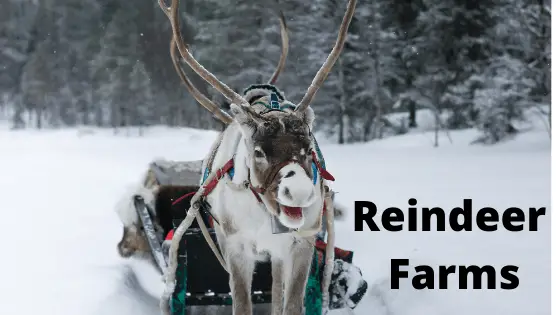Ruminant Farming
Ruminant Farming – While there are a lot of similarities between the various species that make up the mammal family, there are also plenty of differences. One of them is the digestive system. As an example, horses are incapable of burping or vomiting. Their stomachs don’t work that way.
One of the most unique of all mammalian digestive systems is that of the ruminant. Many people are aware of cows and vaguely know that they are ruminants, but not precisely what that means.
It means in part that they have more than one chamber in their stomachs. The first chamber produces cud, which is then returned to the mouth to be chewed further.
The next definition that is needed is what, exactly, is a farm animal? The answer to that may be surprising. There are a lot of animals that are farmed that are unexpected. This is, even more, the case when traveling to other continents. What the average U.S. citizen might expect to find on a farm might be unavailable in China or Africa.
Bovines
Cows: These animals have four chambers in their stomachs. As mentioned, the first one sends the partially digested food back to the mouth for further chewing. It then passes on to the other three chambers before exiting the cow.
Cows have an ancient ancestor called the auroch. They are extinct but were much larger than modern-day cows. They were also ruminants with four chambers in their stomachs. There is rumored to be a herd somewhere, but the likelihood of it being a pure strain is slim.
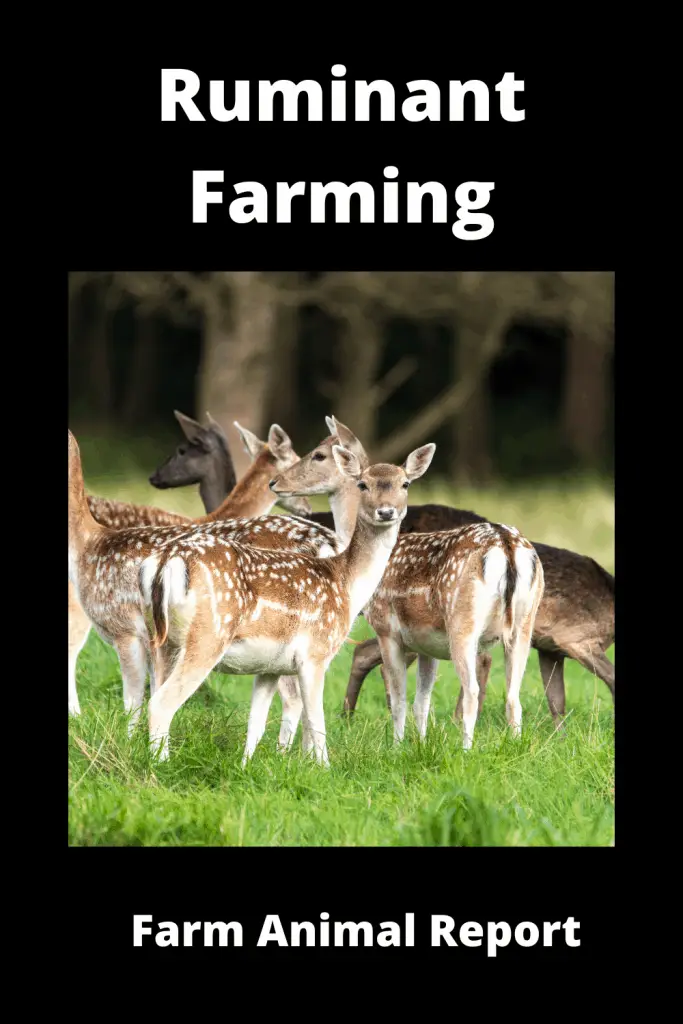
Bison
Once upon a time, the Great Plains of the United States were covered with vast herds of bison. The animals were hunted nearly to extinction, but a few small herds were maintained mostly by indigenous tribes. When the herds were large enough, they became farm animals again.
Bison are farmed for two things; fur and food. The taste is stronger than that of beef cattle but similar. When cooked properly most people think it tastes good. For the uninitiated, it is a strong surprise. However, they do pack a lot of meat into one package.
As with cows, a distant relative, they have four chambers in their stomachs. They also chew the cud, and have similar digestive systems. That is to be expected because of the relationship. In case you are wondering, “American buffalo” are in fact bison.
Water buffalo
This is another distant relative of the cow and bison. It is also related rather distantly to the African Cape buffalo. However, the water buffalo has been tamed enough to be useful. It is also farmed for meat and milk.
There are herds of these animals in places other than their native India. In the northern part of England, a family farm bought to pregnant water buffalo in order to supply milk to their son.
He has an incredible dairy allergy. However, they couldn’t figure out what to do with the male calves. Only so many males are needed on a dairy farm.
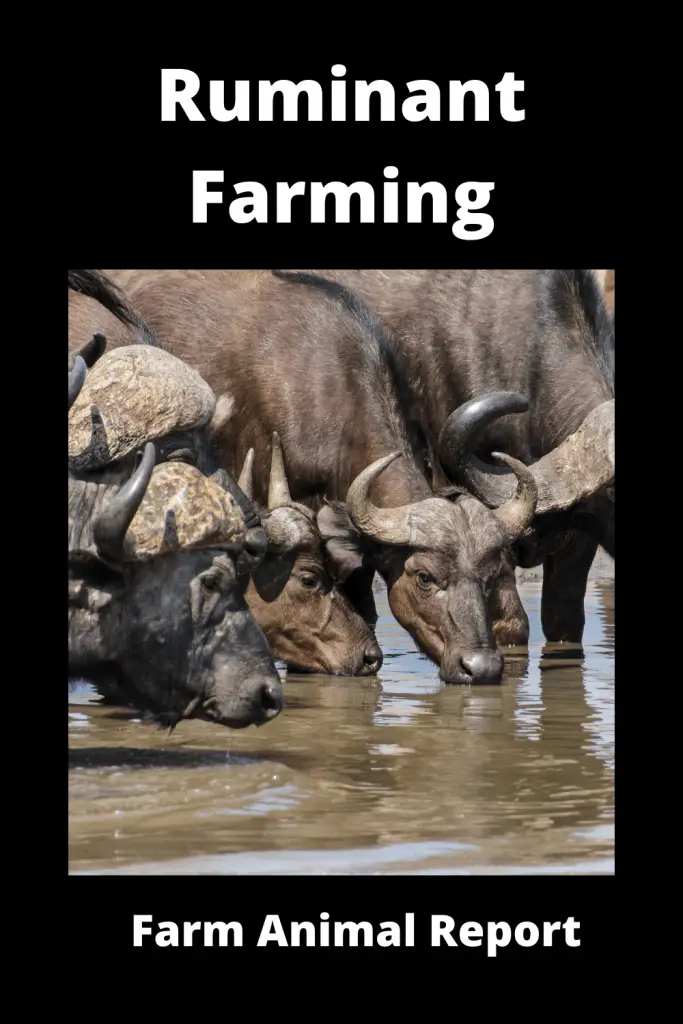
That’s when they began to market the meat. At first, they didn’t have much of an audience, so they gave it away for people to try. Now it is big business for them, as is the milk from the females. They produce hundreds of gallons of milk for themselves and consumers.
Water buffalo are often used in India for farming and even transportation needs. They are capable of carrying heavy loads and they can carry people as well. They have moved through various means to several different continents, including the United States.
Yaks
Both wild and domesticated yaks are ruminants. There is a bit of culture to go with these bovines; they are sometimes interbred with other bovines. Those who are familiar with Mt. Everest and the climbers who dare to try to reach the top probably know that yaks are the animal of choice for the higher elevations.
Yaks that have been interbred with cows are often used in the lower elevations. These animals are called Dzos or Dzomas. According to one resource, the animal called a yak is a castrated male. Those that aren’t castrated are called boas and dris.
Dris give milk year-round, unlike cattle, sheep, and goats. It is richer than the milk of other ruminants but it spoils quicker. The milk is usually made into butter or cheese so it will last. Traditional yak milk cheese doesn’t taste that good to Westerners but some cheesemakers have traveled to Tibet to teach making cheese others may like.
Yak meat is edible, although it is said that it can be tough and chewy. Some areas of Tibet are forbidden to kill a yak for meat, although one that falls off of a cliff may be eaten. They produce about eight hundred pounds of meat.
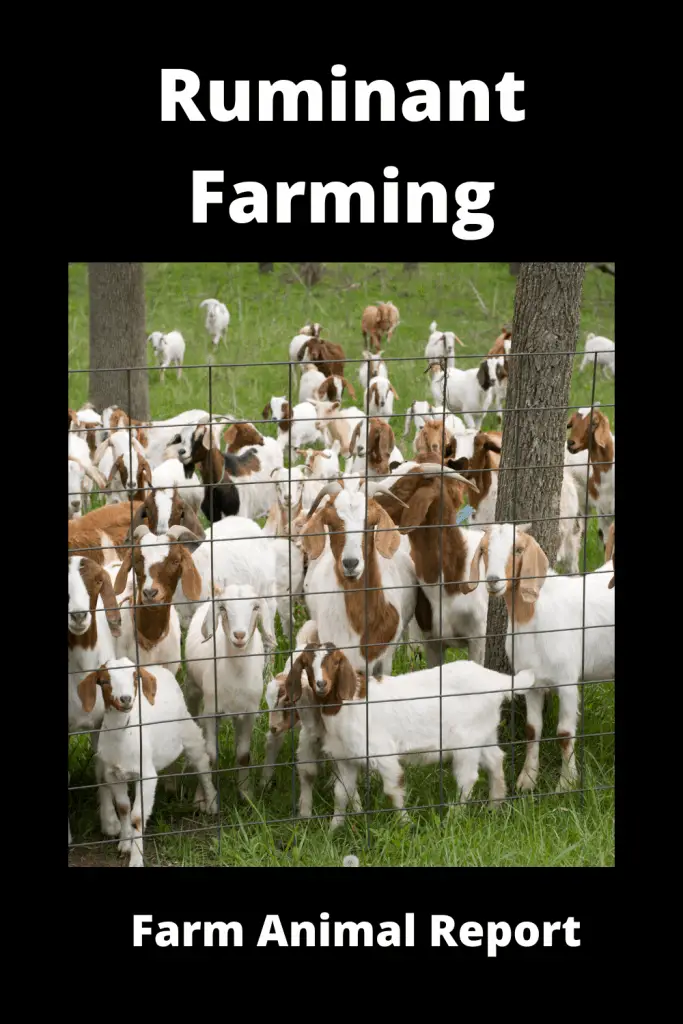
Ovines and Sheep
Like bovines and cattle, ovines and sheep have four chambers in their stomachs. They chew the cud and have a few other similarities. They don’t interbreed with cattle, but they can with other members of the ovine community. Some are wild but there are also domesticated varieties and some of the wild varieties are also farmed.
Bighorn sheep: There are some farms that have this species of sheep available. They tend to be wild in other areas, so it is in both worlds. The males have huge horns (hence the name) and use them during the rutting season in order to establish dominance. The winner gets to have the most ewes.
They are near the beginning of the domestication process. It takes about six hundred years for a species to become fully domesticated, and some animals are further along that trajectory. These animals are mostly sought for meat and fur, although once they are further along they may also be sheared like domestic sheep.
See Our Guide – Ways to Make Money Cattle Farming
Domestic sheep: There are several species of domestic sheep, and they were domesticated for specific purposes. Some sheep have denser wool than others. Some actually have hair rather than the curly wool most of us are familiar with. All of it can be used.
See Our Extensive Guide – 16 Ways to Make Money Sheep Farming
Domestic sheep were among the first animals to reach that distinction. This may have happened somewhere around three thousand B.C. There is evidence of this in Mesopotamia, along the Nile River. One piece of evidence is a statuette of a sheep.
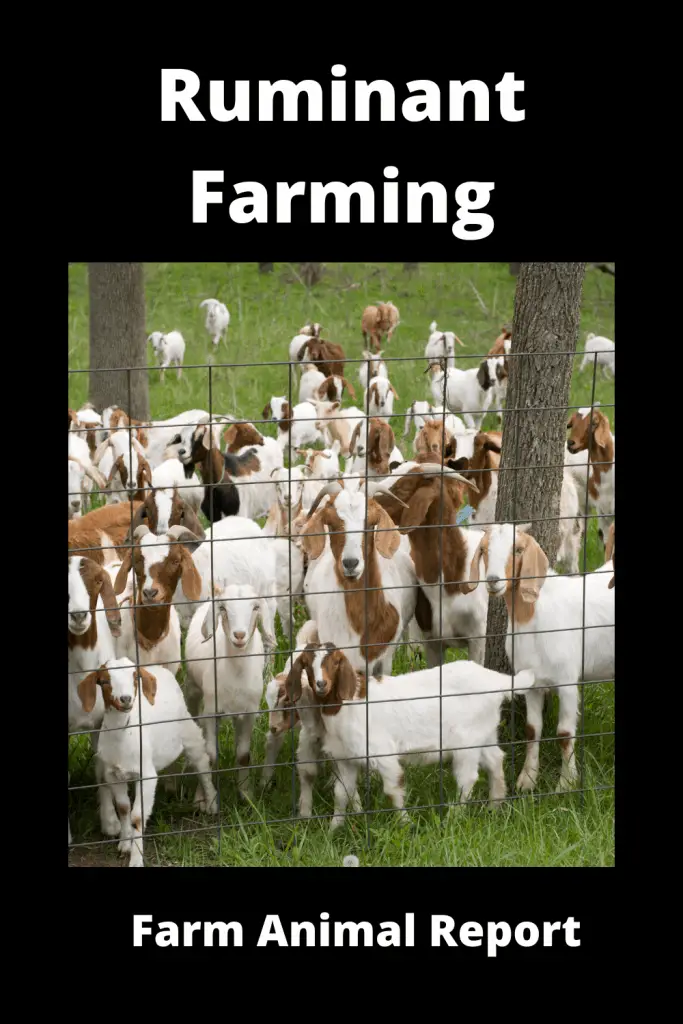
There are many uses for these sheep. The ewes are often milked. People who are lactose intolerant may find the milk doesn’t cause the gastric distress cow’s milk does. Sheep cheese is also very good and is popular in Spain.
Wool from the sheep can be made into many products. People who live in colder climates are familiar with the warmth that wool can bring. They are also aware of the itchiness that can come from wearing it. That is why so many wool trousers have linings.
Sheepskin is valuable for other uses. It is usually processed with the wool still on it, in order to keep the oils. It is useful for preventing bedsores in the elderly or those who are confined to a bed or chair for any reason. It is also used as rugs, chair covers, and things of that nature.
Lamb is more often eaten than mutton or mature sheep meat. However, meat is also used in animal feed for dogs and cats. In other countries, it is preferred meat but the United States market tends to shy away from it.
Mouflon
These are wild sheep, but they are also farmed. The reason they are is that people like to stock their game ranches with them so that hunters can have a chance at them. The mouflon is one of the ancestors of modern domestic sheep, and they are becoming rare in the wild. They have been introduced to areas of central Europe, including Germany.
Caprines and Goats
Very few of these species are farmed. However, those that are seen to be catching on and others may be domesticated in the future. There are some hints that the Alpine ibex was at one time domesticated, but there is nothing to back it up.
One of the interesting aspects of that breed of ibex is that it was found in the stomach of Otzi the Iceman. His body was discovered in a melting glacier with a lot of interesting objects. While that isn’t the only hint that the ibex was one time farmed, it is one of several.
Goats have four-chambered stomachs, but there is one interesting thing to note. Kids’ (baby goats) second chamber is larger than the first. That’s because they have only milk at first. As they add forage to the diet, the first chamber grows larger and is the largest in adult goats.
Domestic goats: The people of Simi Valley, California are very grateful for the domestic goat. During the 2019 Easy-Fire, the fact that domestic goats had been set to graze on the hillsides helped to preserve homes, lives and the Reagan Presidential Library. That isn’t the only place that uses goats for this purpose, but it is the most prominent.
Besides being great lawn mowers, domestic goats have a lot of benefits. The milk is used as a cow’s milk replacement and it can be made into butter, cheese, and even soap. The taste of the milk is very strong, unlike that of cows and sheep. However, for those who are lactose intolerant, it is a good thing.
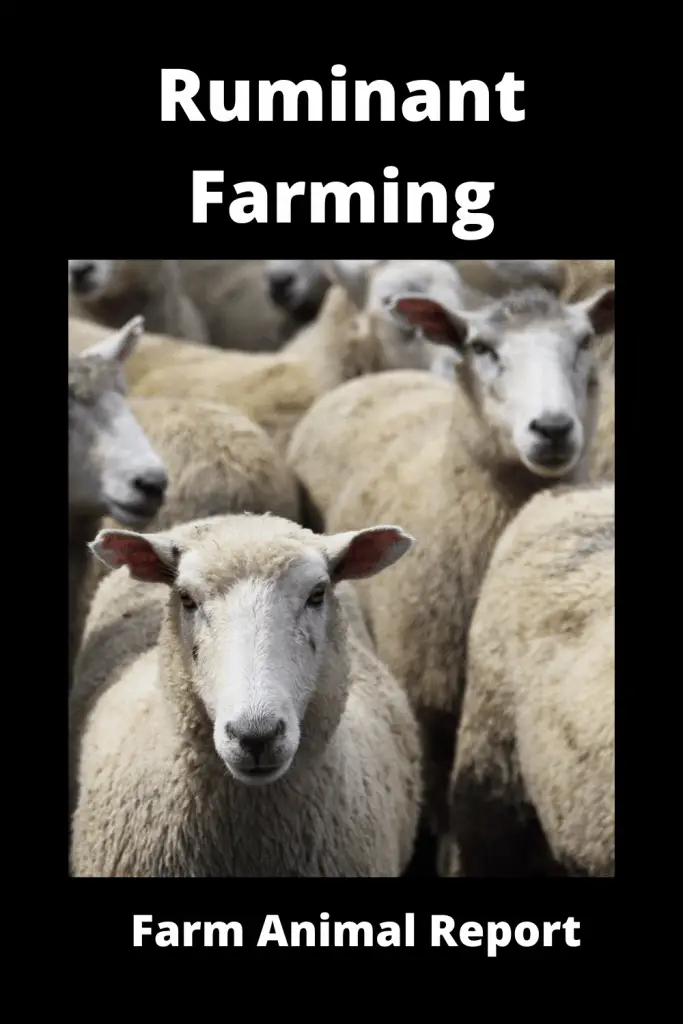
Goat meat is also rather tasty when cooked properly. The meat of a kid is more delicate, but it can taste a great deal like steak when cooked in a stir fry. Cooking it in a tagine will make it more tender, but the taste is stronger.
Goat skins have been used for a long time. It was used to hold water, milk, and even wine. It was written about in the Bible and in other ancient texts. Putting milk in it can result in a type of cheese under the right (or wrong) conditions.
Coffee lovers will enjoy this story of goats. A monk was watching goats at play. They would eat berries from a certain plant and they would get aggressive and become very energetic. He was having trouble staying awake for prayers, so he decided to try the berries. He stayed awake for twenty-four hours. The plant… was coffee.
Cashmere goats
For those who love cashmere, guess what? It doesn’t come from sheep. It comes from goats. At one point, the wool from these goats was most often from Nepal and nearby areas. The name comes from another area, called Kashmir. The goats are sheared like sheep and the hard wool is separated from the softer underfur. That is made into threads and finally into garments.
Musk Ox
This animal got its name from the scent of the rutting males. It is a very strong, musky scent that entices the females and repels a lot of humans. However, the meat is often eaten in the Arctic climates the musk ox frequents.
In Alaska, musk oxen are farmed for the underfur, called Qiviut. This makes a really nice, soft yarn that can be made into scarves, mittens, and other items of clothing. To do the harvesting of the quiviut, some of the musk ox are herded into barns that have combing stalls. The underfur is ready to be combed out around mid-April, and it is done by hand with a long hair pick.
Others are herded into a chute. There, while the musk ox enjoys some grain, panels of the underfur are lifted off. This is much easier because all areas of the musk ox can be seen to. When they aren’t being combed, they make great sightseeing for interested visitors.
Moose / Deer
There are a lot of animals in this class, including elk and moose. A few of these species are farmed, while most are found in the wild. Farming animals in the deer category takes a lot of space; something many farmers lack. However, the market for some of the products this type of ruminant has to offer is fairly open.
See Our Extensive Article – 7 Ways Deer Farmers Make Money
The biggest problem for farming deer, elk, and moose in the United States is a disease called CWD. This disease is communicable to humans when meat is consumed. For this reason, a lot of what is consumed comes from New Zealand.
American Wapiti / Elk
At first, these majestic animals were raised for game ranches or zoos. They are coming along in the domestication process and many consider them domesticated now. The meat is excellent but there are other valuable aspects to farming elk.
One of them is velvet. Each spring a male elk will grow antlers. They are a living part of the animal. The antlers are fairly soft and they are covered with velvet. The velvet is fed by a lot of small blood vessels. Without causing harm to the animal, these antlers can be harvested while they are still living and sold. The farmer can make anywhere from twenty dollars a pound to fifty dollars a pound.
Breeding age females are also a big part of the elk market. Whether it’s for meat, velvet, or a game ranch, it takes a lot of cows are needed to keep the flow going. Elk has a ninety-five percent pregnancy rate, and the calves are born in May. Even with the CWD problem, cows can bring in between two hundred and a thousand dollars each, depending on bloodlines.
Meat is the other salable reason for farming elk. Even though some may be unwilling to risk the rare but deadly infection, people enjoy the meat greatly. It is often used in high-end restaurants, but some stores carry it. On the West Coast of the United States, a grocery chain called Sprouts Farmers Market will occasionally sell it. It tastes a great deal like beef, but it is lower in fat and cholesterol.
Deer
While some areas of the United States have an overpopulation of deer, they are now being farmed on a regular basis. Unlike elk, they are farmed mostly for meat. Venison is lower in fat and higher in protein than beef, making it ideal meat for those who are health conscious.
There are a lot of benefits to farming deer. For one thing, there is an underproduction in the United States.
Only twenty percent of the demand is kept, so the market is growing. Unlike cattle, deer don’t mess up a pasture as badly. They can reproduce for twenty years; much longer than cows. The meat is highly desirable.
Another good aspect about deer is that they require less fodder and can live on marginal land. Cows need a lot more feed and prefer pastures in better conditions than deer. In the wild deer are rather small. They have to deal with predators, weather, and other problems. Domesticated deer can grow to a much larger size.
Reindeer
While children will think about Santa when they hear this word, reindeer have a large job to do. They are also called caribou, and they are necessary for a lot of people near or in the Arctic.
They are farmed for a lot of reasons, including pulling sleighs. The author of The Night Before Christmas was correct in choosing these animals for Santa’s sleigh.
When it comes to domestication and farming, reindeer were later than most ruminants. Some sources say they were the last to become domesticated, but with the emergence of deer in that category, they may be considered next to last.
Archeological evidence shows that domestication probably began around three thousand years ago. Complete domestication probably occurred around the Middle Ages, between one thousand and fifteen hundred A.D.
There are several reasons for domesticating these animals. They are adapted to the cold found in their territory; the arctic. They have thick fur, a lot of meat, and the kind of fat needed in extremely cold climates. However, that isn’t all they are used for.
Transportation can be a big issue when it is freezing cold and snowing. Saddles have been developed for the reindeer. Two varieties were developed; one on the Mongolian steppes and the other on the Altai steppes. This is one way of using them for transportation.
Sleds were also developed. While they wouldn’t work well in rocky terrain, they can glide fairly easily over snow, grass or sand. The reindeer are strong animals and can pull heavy loads. That is useful in nomadic societies.
Reindeer were introduced to Alaska in the late eighteen hundreds. The reason for this introduction was the demise of the whaling industry. For a long time, whalers would trade with Alaska natives for meat and pelts. That made the natives dependent on the goods and it also depleted the animals they needed to survive.
Congress granted permission for reindeer to be purchased from Siberia and shipped to the starving villages. Over time, the herds built up and provided goods for them. When the gold rush began, they became even more in demand. Not only were they used for meat, but the miners also used them to haul their gear and any gold they found.
Final Thoughts
Ruminants are an important part of our daily lives. They were among the first and the last to be domesticated and have faithfully provided us with meat, milk, fur, yarn, leather, and transportation. They are a valuable addition to any farm and in wildfire areas, they are vital to fire prevention.
Even wild ruminants have value. That includes species such as the chamois and giraffes. Some of the wild animals are either threatened or endangered. That would include the giraffe. Some are protected by law in order to prevent overhunting. Chamois are in that category.
While it is true that ruminants produce methane, they are not the only source. Many animals produce it and it can be found in pools. This is especially true in the arctic, where there are bubbling methane grounds. Putting the blame on the ruminants is not the best way to cope with climate change.
Resources
https://www.animalwised.com/ruminant-animals-full-list-and-fun-facts-206.html
https://www.thecattlesite.com/articles/2162/buffalo-farming/
https://factsanddetails.com/china/cat6/sub38/item193.html
https://afs.okstate.edu/breeds/sheep/mouflon/
https://www.muskoxfarm.org/collectingqiviut
https://www.elkusa.com/Elk_Farming.htm
https://www.thoughtco.com/reindeer-history-and-domestication-170666


